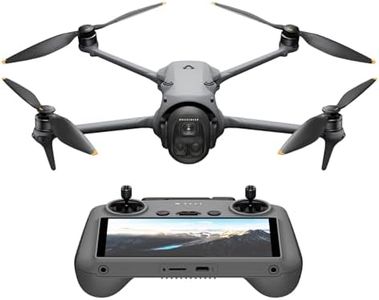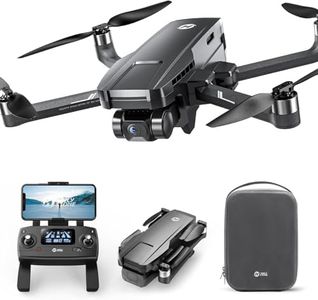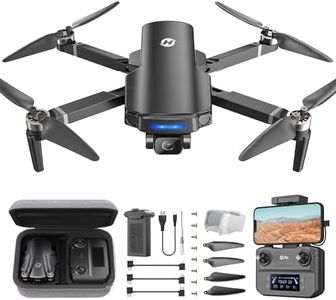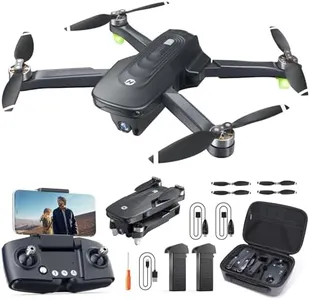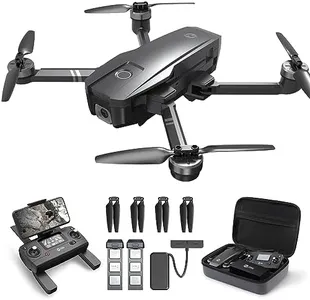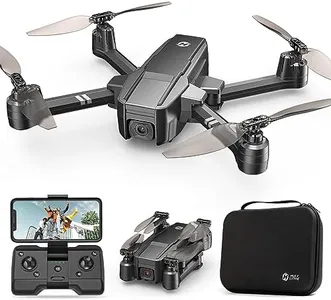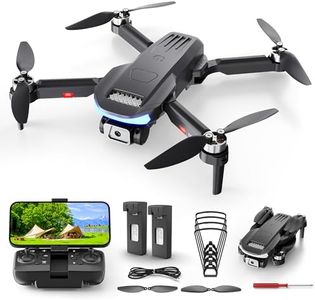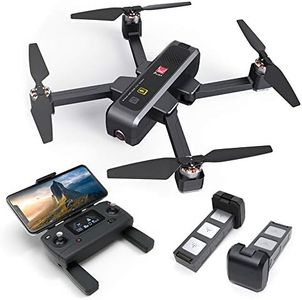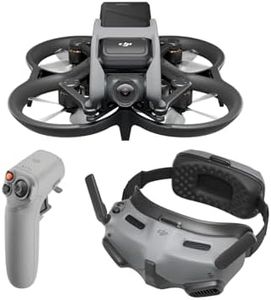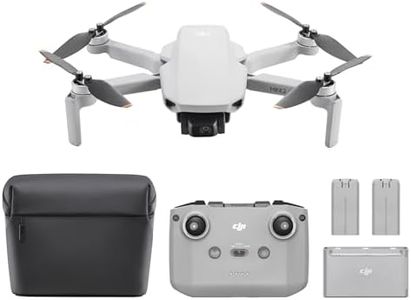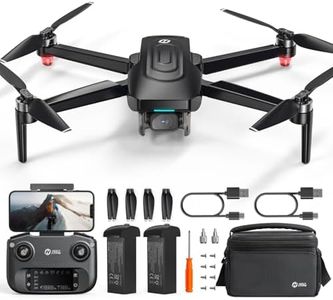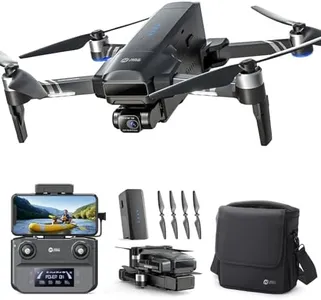We Use CookiesWe use cookies to enhance the security, performance,
functionality and for analytical and promotional activities. By continuing to browse this site you
are agreeing to our privacy policy
10 Best Drones For Real Estate
From leading brands and best sellers available on the web.Buying Guide for the Best Drones For Real Estate
Buying a drone for real estate purposes means you want to capture appealing photos or videos of properties from unique perspectives. The right drone can help you show off houses and land in their best light, highlight features like pools or gardens, and even create smooth video tours. To pick the right drone, you should know which features make aerial photography and video clear, stable, and easy to use for marketing. Understanding the key specs will help you choose a model that matches your needs, whether you’re making basic listings or high-end videos for luxury properties.Camera Quality (Resolution and Sensor Size)Camera quality is crucial because it determines how sharp, detailed, and professional your photos and videos will look. Higher resolution (measured in megapixels for photos, and in 1080p, 2.7K, or 4K for video) means clearer, more print-friendly images and smoother, higher-definition videos. Sensor size, typically expressed in fractions of an inch or as '1-inch sensor', has a big impact as well—bigger sensors capture more light and detail, which is helpful for shooting in various lighting conditions. Entry-level drones may offer 1080p and small sensors, which is acceptable for basic listings. Mid-range and professional drones often feature 4K and larger sensors, making them suitable for more demanding marketing materials. If your goal is to make property images stand out or to capture indoor and outdoor scenes with vivid colors and detail, aim for at least 2.7K or 4K video resolution and a sensor size no smaller than 1/2.3 inch.
Gimbal StabilizationA gimbal is the mount that keeps the camera steady while the drone moves around. Good gimbal stabilization is important because it prevents shaky footage and blurry photos, which can make your listings look unprofessional. Most modern drones come with a 2-axis or 3-axis gimbal. A 2-axis gimbal stabilizes roll and pitch, while a 3-axis gimbal also corrects yaw, giving you perfectly smooth video. If you plan to focus more on photography, a 2-axis gimbal may be enough. But if you need cinematic, fluid videos or want to fly in windy conditions, go for a drone with a 3-axis gimbal.
Flight TimeFlight time indicates how long the drone can stay in the air on a single battery charge. This is typically between 15 and 30 minutes per battery for most drones. Shorter flight times mean you may have to stop and swap batteries more often, which can interrupt your work and make you miss the perfect lighting or shot. For small properties or quick shoots, entry-level flight times can suffice. For shooting multiple angles, larger properties, or video tours, look for drones with longer flight times. Consider your shooting style and how long you typically need for a session to decide what’s right for you.
Transmission RangeTransmission range tells you how far you can fly the drone from your controller while still seeing a live video feed and maintaining control. This can range from a few hundred meters to several kilometers. For residential real estate, you usually don’t need extreme range, but a longer range can be helpful for covering larger properties, estates, or farmland. Choose a transmission range that matches the scale of your typical projects and ensures a reliable, interference-free signal.
Obstacle Avoidance SensorsObstacle avoidance sensors detect and help the drone avoid trees, walls, and other objects. They’re important for beginners or when flying around tight property spaces, as they reduce the chance of crashing and damaging the drone or property. Drones may have sensors facing forward, downward, backward, or in all directions. If you often fly in cluttered or dense areas, a drone with comprehensive obstacle avoidance is a safer choice. For open, obstacle-free lands, basic downward or forward sensors may be enough.
Control and Intelligent Flight ModesControl and intelligent flight modes are software features that make it easier to fly and create engaging shots. Features like GPS hold, 'return to home', orbit, follow-me, and automated panoramas save time and let you focus on getting creative with your shots rather than manual flying. If you’re new to drones or want to automate property tours, look for drones with user-friendly intelligent flight modes. More features generally mean a gentler learning curve and more professional-looking results.
Portability and SizePortability refers to how easy it is to carry your drone around, which is especially important if you shoot at multiple locations or travel often. Some drones fold up or have lightweight bodies, making them easy to fit in a bag. Larger drones may offer higher quality, but are harder to transport and can draw more attention. For agents who regularly switch locations or value convenience, a compact, foldable drone is a smart pick. Those who only work at one location or prioritize top-tier performance may be fine with a larger model.


